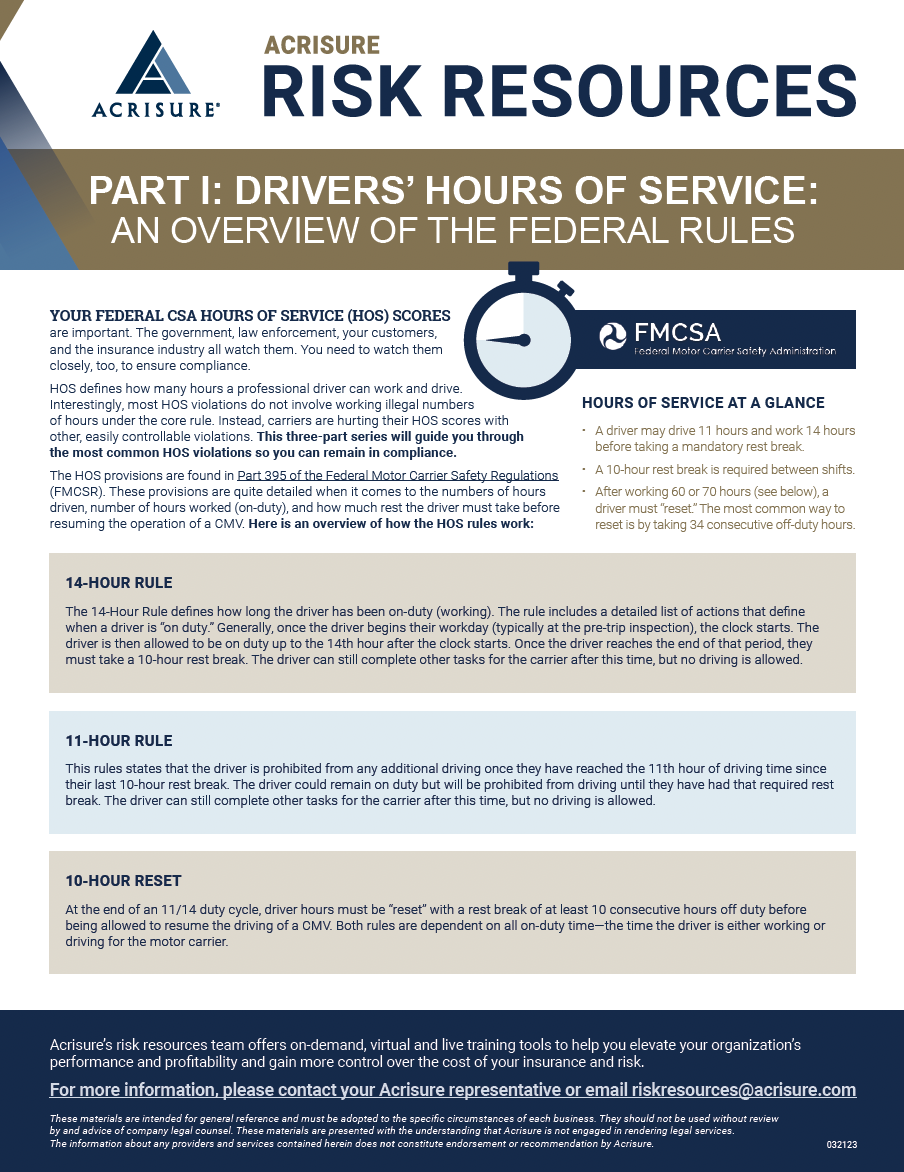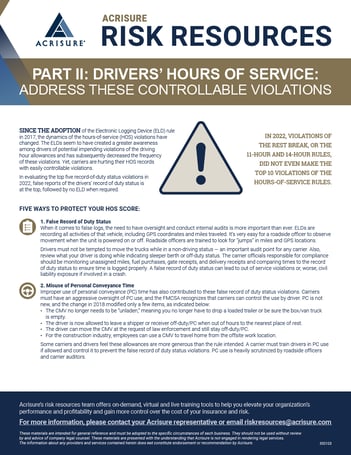Knowledge On Demand
Safety Culture & Leadership
Tips for Creating Effective Processes
Many safety and production failures result from employees failing to follow or understand process. Process is your guardrail. It sets the tone and expectations at your company. Process development does not need to be complex. Handbooks should be short and concise. This document provides tips for you to create effective process.
How To Perform A Root Cause Analysis
Organizations should perform a root cause analysis after every incident – regardless of whether the outcome was minor or severe. This allows businesses to understand what happened and how to fix the situation. If you learn from an incident with a minor outcome, you'll go a long way toward preventing a severe one from happening.
Twelve Keys to Leading People Safely
The skills required to successfully lead people safely are the same as those needed to run top-notch operations: attention to detail, focused execution, standardized and disciplined processes, an understanding of roles, meaningful metrics, personal accountability, and alignment around the group mission and vision.
Behavior-Based Driver Safety Policies
Safety happens when people govern their own behavior. Look at your handbook and compare it to the suggested behavior-based safety policies on this document. Does your handbook cover these items? If not, consider incorporating these policies into your handbook where applicable.
Checklists: The Simple Way To Reduce Risk
Would you board a flight where the pilot decided that he or she is going to skip performing the pre-flight checklist? The flight checklist does not teach a pilot how to fly. The checklist serves as a simple reminder of mission critical tasks and how to perform them. The same concept applies to each of our businesses.
Shortcuts and Your Safety Program
The space shuttle challenger explosion was not an accident. It was a “predictable surprise.” The same circumstance that caused the space shuttle to explode are present in many businesses. It's known as normalization of deviance. This happens when people deviate from process and take shortcuts. Normalization of deviance is the ultimate enemy of safety. Learn what normalization of deviance is, where it may be present in your company, and how to eliminate it.
It's Not an Accident. And It's Not Minor
All safety failures must be treated with equal attention, and none should be overlooked. Learn how to ensure your organization’s culture accepts zero as the only goal, to create understanding around the idea that no safety failure is “minor,” and to conduct a root cause analysis.
Close Calls
All safety failures must be treated with equal attention, and none should be overlooked. Learn how to ensure your organization’s culture accepts zero as the only goal, to create understanding around the idea that no safety failure is “minor,” and to conduct a root cause analysis.
How To Engage Owner Operators in Safety
All safety failures must be treated with equal attention, and none should be overlooked. Learn how to ensure your organization’s culture accepts zero as the only goal, to create understanding around the idea that no safety failure is “minor,” and to conduct a root cause analysis.
FMCSA & OSHA Compliance
Pre-Employment Screening Best Practices
The best way to ensure you’re employing qualified drivers is to perform comprehensive pre-employment screenings. The Federal Motor Carrier Safety Administration’s (FMCSA) Pre-employment Screening Program (PSP) provides secure access to drivers’ crash and inspection histories to help carriers make informed hiring decisions.
Avoiding the 5 Most Cited Roadside Violations
The Federal Motor Carrier Safety Administration (FMCSA) published the most commonly cited roadside violations. Scan the QR codes in this document to view important resources that can help you operate safely on our nation’s roads and avoid these top five violations.
Protect Your CSA Scores by Using the DataQ Process
A data quality review (DQR) is an online process that uses FMCSA’s “DataQ” system to request and track the review of Federal and state data issued by FMCSA that is believed to be incomplete or incorrect.
Proposed Changes to FMCSA’s Carrier Safety Management Program
To prepare for the possible adoption of the Federal Motor Carrier Association’s CSA changes, which will likely take effect late 2023, motor carriers must anticipate the potential impact of proposals and make the necessary adjustments to safety and compliance programs. This document outlines the potential changes, the impact they will have on fleets, and how to act now to ensure your organization is not impacted.
Since the adoption of the Electronic Logging Device (ELD) rule in 2017, the dynamics of the hours-of-service (HOS) violations have changed. Unfortunately, carriers are hurting their HOS records with easily controllable violations. This document provides you with the HOS basics and what you can do to help prevent rising HOS scores within your company.
Personal conveyance has long been an issue in the trucking industry. How many miles can the driver run using personal conveyance? How many hours can the driver drive? From where? To where? Personal conveyance has had as many definitions as there have been trucking companies and drivers who use it. It has been construed in a way to reconcile the limits of driving and on-duty time to meet the needs of a particular type of activity.
How To Get More Credit for Your Safety and CSA Scores
Learn how to effectively manage safety & compliance data. Topics covered include:
- Best practices to become more proactive with compliance
- How to involve safety in overall corporate strategy
- Ways to effectively manage safety & compliance data
- Understanding the consequences of non-compliance
How To Submit Your OSHA Recordkeeping Logs
This training will cover:
- Direct reporting injuries to OSHA
- OSHA log requirements
- Electronic 300a submissions
Distracted Driving
Eight Tips to Help Your Employees Combat Distracted Driving
While the decision to drive while distracted rests with the driver, organizations must play an active role in mitigating this risky behavior. Ensure your organization has a strong and grounded safety culture that is understood and implemented at all levels. This document provides leaders with seven tips to combat distracted driving.
A Unique Approach To Stop Distracted Driving
Solving the distracted driving problem requires a unique approach - and a shift in the mindset of everyone (not just drivers). This training, especially impactful for dispatchers, will shift some accountability from the drivers to the office staff.
How to Build Psychological Safety in High-Hazard Industries
Jake Mazulewicz, Ph.D explores the critical topic of building psychological safety in high-hazard industries. Drawing from his expertise, Mazulewicz provides invaluable insights and strategies for creating a culture of trust, open communication, and support within these high-stakes environments. By prioritizing psychological safety, organizations can enhance employee well-being, foster innovation, and ultimately improve overall safety performance.
The Psychology Behind Change: How Fear Can Derail Your Organization
In her talk, Tina Semotan, the Acrisure Managing Partner of the Midwest Region, sheds light on the challenges of change and emphasizes the crucial role of leaders in guiding their employees through it. She highlights how fear can often derail organizations and hinder growth, making it essential for leaders to help their teams embrace change. With her expertise, Tina offers valuable insights on how leaders can navigate the psychology behind change and create a culture that welcomes and adapts to new possibilities.





















